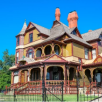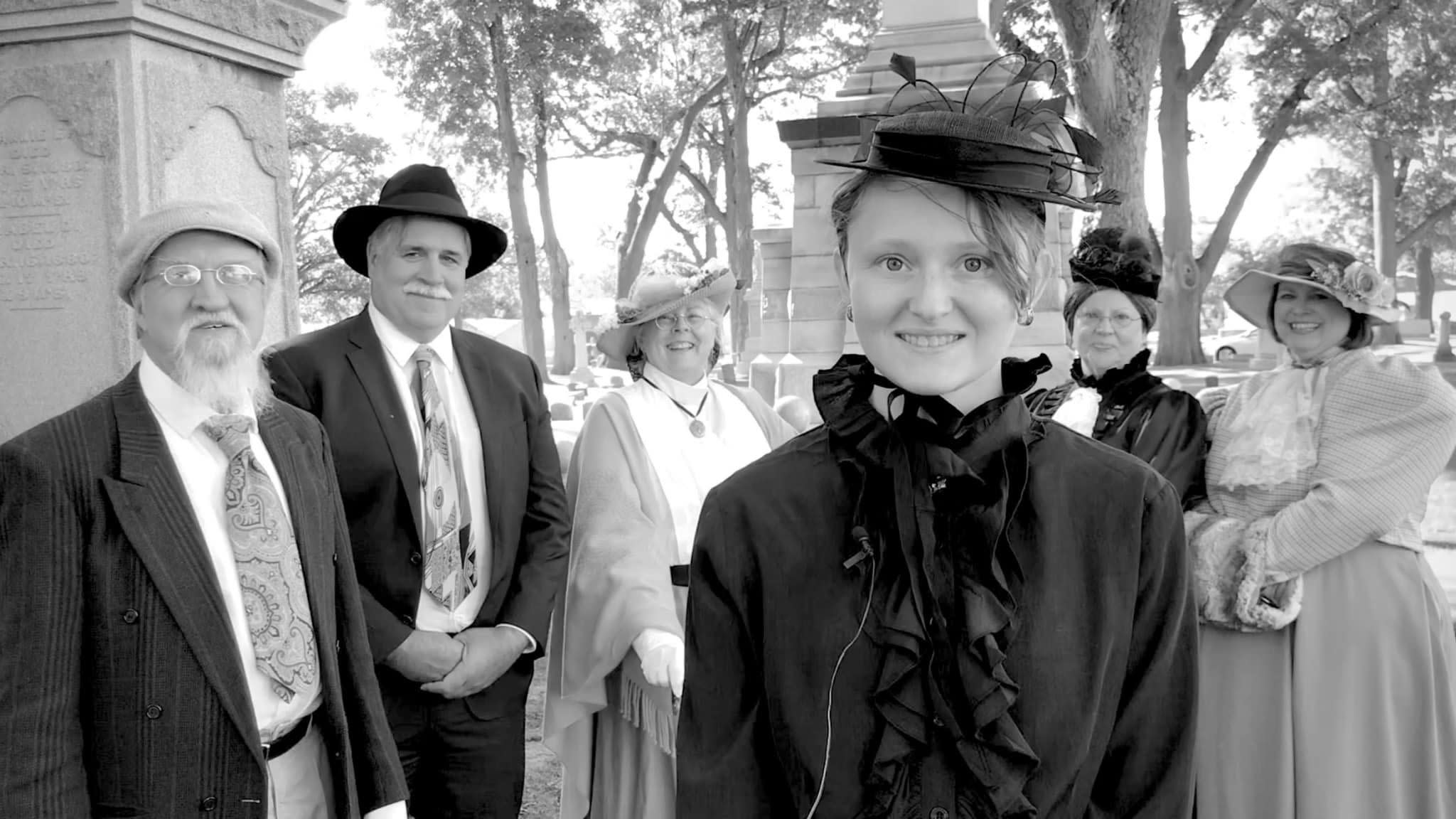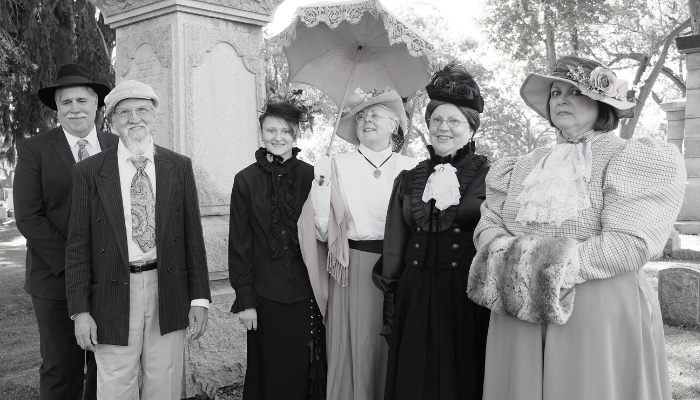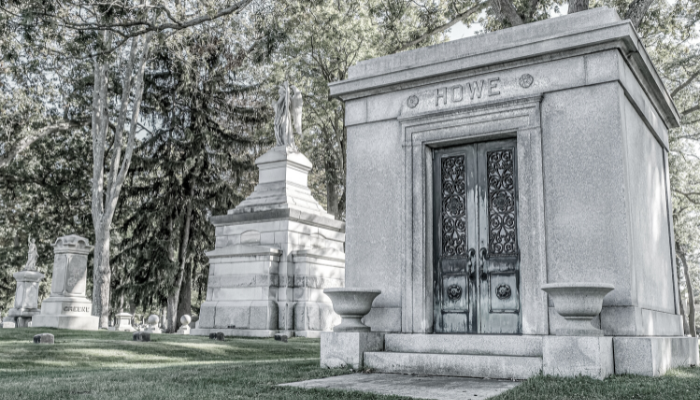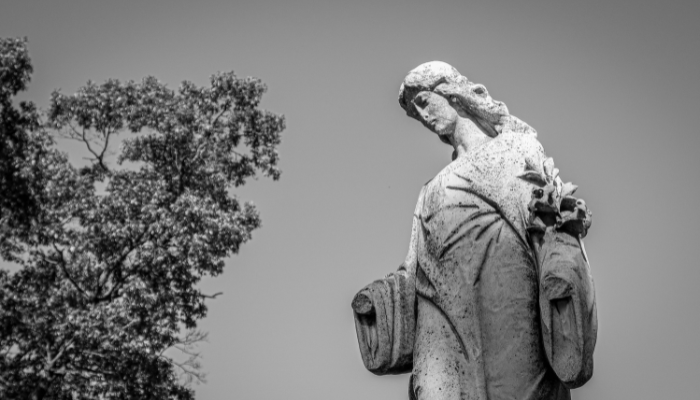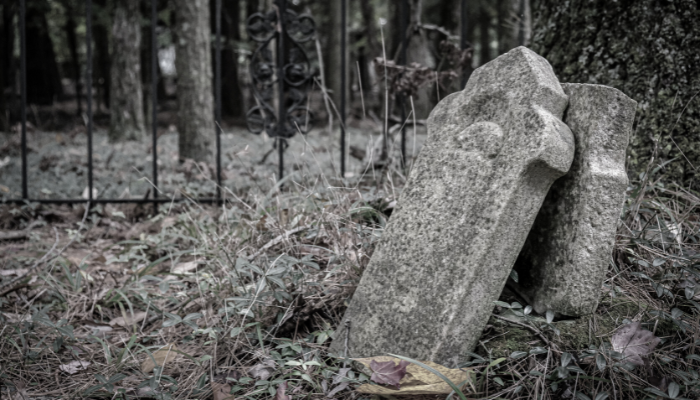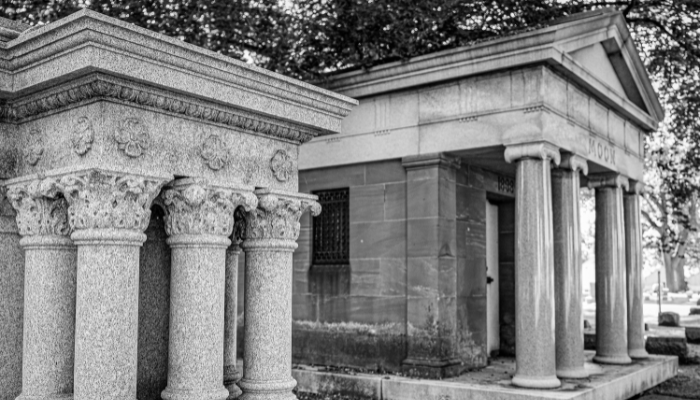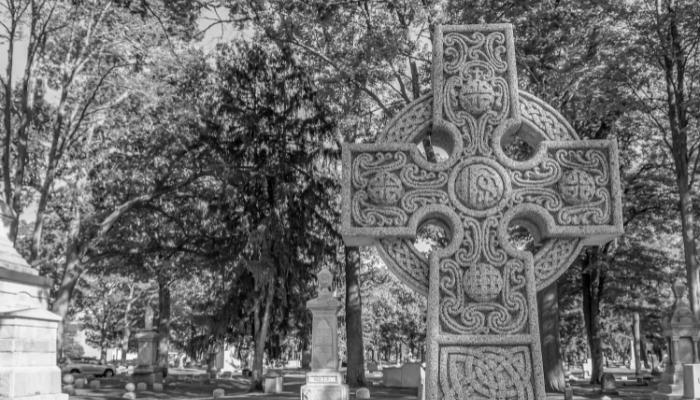Guest Blog provided by City of the Dead
"Tales are waiting to be told from behind the headstones."
Serving as the final resting place of many of Muskegon's prominent and influential historical figures, Evergreen Cemetery is a treasure-trove of stories waiting to be told.
What is City of the Dead
City of the Dead is a historical reenactment tour of Evergreen Cemetery. Taking place every second weekend of October, the event highlights the lives of past residents, from all walks of life.
This annual event began in 2009. Colorful members of Muskegon’s history are portrayed by community actors in period costume. Visitors may meet a lumber baron who had a habit of suing anyone who crossed his path (including his own brother). A spunky woman with a penchant for bloomers. There are tales from the lumber camps and about the lives of women working in the mill. You may hear the encouraging story of the “Ten Hours or No Saw-Dust” strikers.
History of Evergreen Cemetery
However, Evergreen Cemetery isn’t the first settler’s cemetery in Muskegon. The Old Cemetery, as it was once called, stood on the corner of First Street and Muskegon Avenue. This plot of land is now occupied by Mount Zion Church of God in Christ and is a part of Muskegon Avenue. The original cemetery filled more quickly than city leaders anticipated as the town ballooned in population. Bodies were buried in the aisles and overcrowding raised concerns about sanitation.
"The Branded Hand of Captain Jonathan Walker" The letters "S.S.," for slave stealer, were branded on the hand of abolitionist Capt Walker
Mayor Chauncey Davis donated ten acres of his farmland to the city for the a cemetery. On the far outskirts of town, the land was considered a desolate place. This made an appropriate location to move the dead away from the blossoming city. So, pine coffins were loaded into wagons and moved into various plots throughout the cemetery; some of which are still known.
However, it still wasn’t a comfortable place for the bereaved to visit their kin. Therefore, the Ladies Cemetery Association was formed.
Garden Cemeteries, the First Public Parks
Maria Piper, Laura Smith, and several other well-connected women in the city took it upon themselves to turn the burial ground into a proper cemetery. One that would emulate the then-thriving garden cemetery movement; bringing the comforts of a peaceful countryside into city life. Garden cemeteries generally featured rolling hills, flowing water, winding paths, and extensive landscaping.
Click here to read about Mouth Cemetery in our "Whispers of Hauntings" Blog
While the Ladies Cemetery Association couldn’t build up hills, they could install fencing and benches, create a small park at the entrance, plant flowers and oak trees, and have a well dug to maintain their plantings. They eventually had a fountain installed at the center of the cemetery. Muskegon’s Evergreen Cemetery reflected the aesthetics of the most sought-after cemeteries in the country, a high aspiration for a small, but quickly growing, city.
Bidding on the Most Desired Plots
The plots in Evergreen became so highly desired that spaces around the fountain were auctioned off to prominent families. The fountain was later removed to make even more burial spaces. As a thanks for her hard work in fostering the cemetery's beauty, Laura Smith was given first choice of a plot in this newly opened section. Her plot is only a few feet from the Moon family crypt, the first mausoleum built.
Many of the city’s most influential families purchased plots in this auctioned-off section of the cemetery, their names eventually gracing city streets, buildings, and institutions. The largest of these monuments belongs to the Hackley family. Charles Hackley, one of the wealthiest of Muskegon’s lumber barons, had his monument built before his death, believing that something so beautiful ought to be enjoyed during his lifetime. He had the crypt built from Vermont granite brought in by ship.
Digging into the History
But it isn’t only Mr. Hackley and his peers with plots in Evergreen! Muskegon’s City of the Dead tour also highlights the lives of ordinary citizens. The cemetery features a Potter’s Field. The precise location is unknown, though sources indicate may lay in the southeast corner of the cemetery. There are two marked stones in this area – that of C. F. G. McQuestin, who died in his 30s, and that of Freddie Fiefeld, a child who died at age 9 in 1873. While their stories are difficult to uncover, City of the Dead cast and crew members pour over records every year, seeking out the truths of these lives along with those more readily documented.
Take a Tour
City of the Dead tours take place the second full weekend of October. Tours step off approximately every 15-20 minutes and last about an hour. Guests are advised this is a rain-or-shine event. The route travels off the paved path and into the grassy cemetery aisles. For more information, current schedule and pricing, please visit the City of the Dead website HERE.
